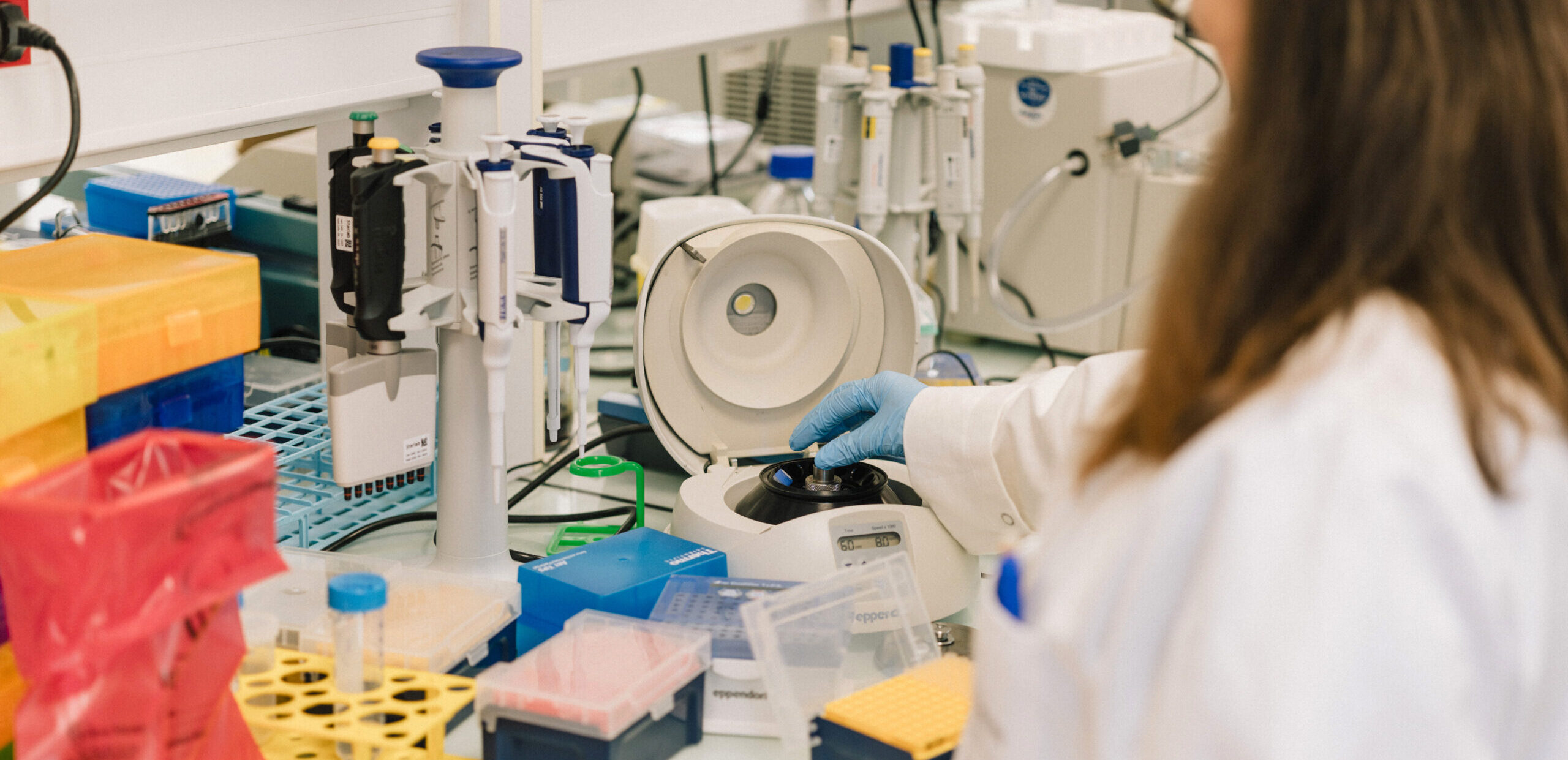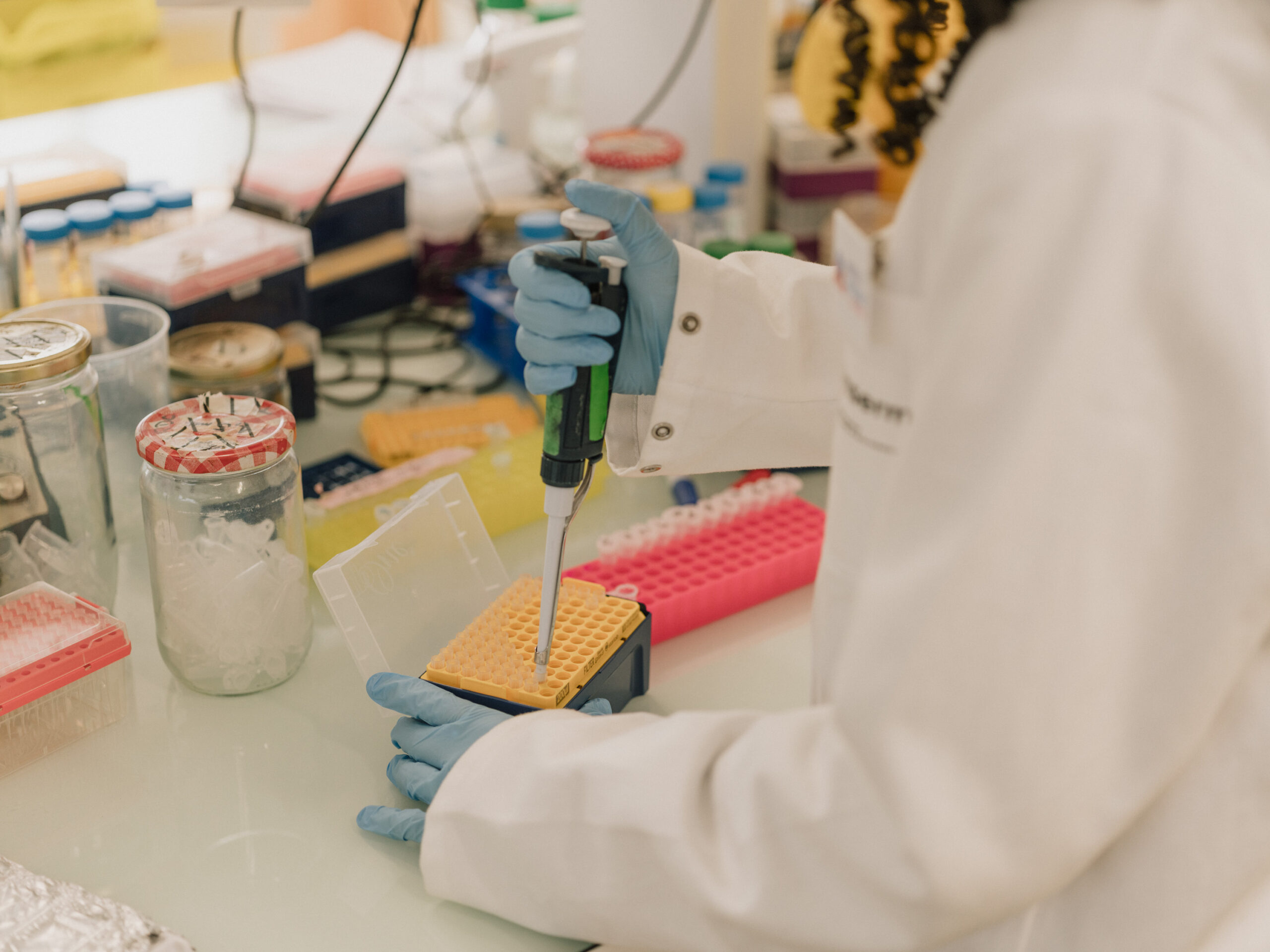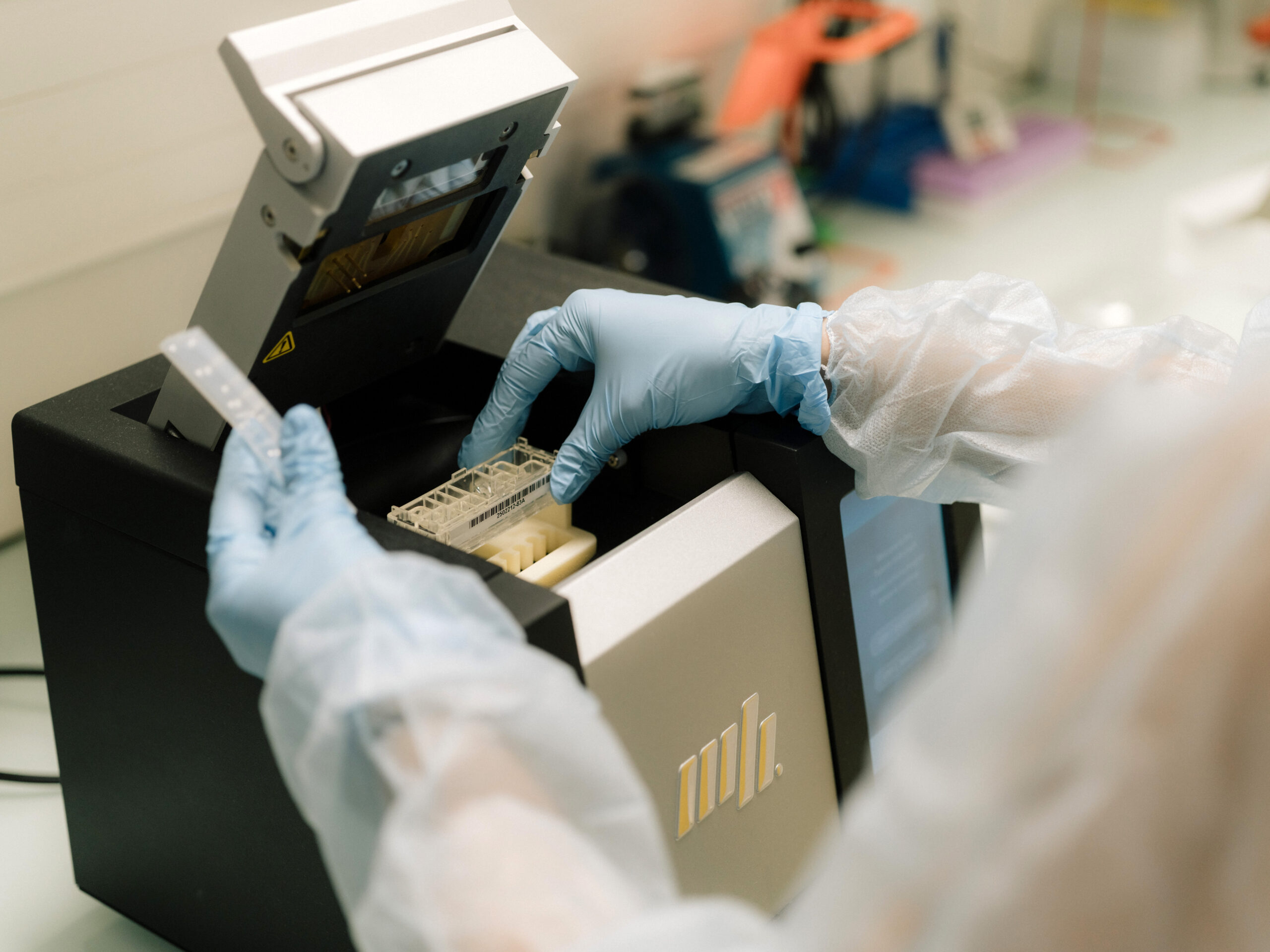- About us
- A new Institute dedicated to combating Leukemia
- Medical-scientific program
- History of Hematology on the Saint-Louis Campus
- Institute Governance
- Press Room
- Contact us
- Our news
- Profile of Valéria Bisio, Research Officer
- Establishment of a Hemato-Oncogenetics Unit
- Profile of Alice Gros, a peer-support patient
- Laureates of the first call for projects of the Leukemia Institute
- Profile of Julien Calvo, researcher
- Support us
- Join us
- You are
- Patients and relatives
- To be cared for and supported
- Become an expert patient
- Discover the Leukemia Institute
- Researchers
- Research
- Clinical trials
- Discover the Leukemia Institute
- Healthcare professionals
- Refer a patient
- Our clinical research
- Discover the Leukemia Institute
- Industry partners
- Discover the Leukemia Institute
- Translational research
- Donors
- Support us
- Discover the Leukemia Institute
- Care
- Patient care
- Being Treated at the Leukemia Institute
- Anti-cancer Treatments
- Supportive Care
- Open Multidisciplinary Meetings
- Our clinical services
- Department of clinical hematology
- Department of adult hematology
- Hematology Transplant Unit
- Department of Pharmacology and Clinical Investigations
- Department of clinical hematology and cell therapy
- Adolescent and Young Adult Unit
- Outpatient Hemato-oncogenetics Unit
- Department of senior hematology
- Department of pediatric hematology and immunology
- Our medical laboratories
- Hematology Medical Laboratory, Michaela Fontenay
- Hematology Medical Laboratory, Jean Soulier
- Molecular Genetics Unit, Hélène Cavé
- Hematology Medical Laboratory, Vahid Asnafi
- Patient Information
- Acute Myeloid Leukemias
- Acute Lymphoblastic Leukemias
- Myeloproliferative Neoplasms
- Myelodysplastic Syndrome
- Anti-cancer Treatments
- Supportive Care
- Psychological Support
- Research
- Our research teams
- Molecular pathology
- Functional precision medicine for leukemia
- Normal and pathological hematopoiesis
- Niche, Cancer, and Radiation in Hematopoiesis
- Population Evolution and Interaction Particle Systems
- Translational Immunology in Immunotherapy and Hematology (TIGITH)
- Identification and targeting of extrinsic regulators of myeloid malignancies
- Lymphoid niches, Chemokines and Immuno-hematological syndromes
- Molecular Mechanisms of Acute Myeloid Leukemia Development
- Chronic Myeloid Malignancies, Microenvironment & Translational Research
- Leukemia & Niche Dynamics
- Genetic and Epigenetic control of Normal and Malignant Hematopoiesis
- Stem cell dysfunction and secondary AML
- Biostatistics and clinical epidemiology
- Our technological platforms
- Our clinical research
Accueil Patient care Acute Myeloid LeukemiasAcute Myeloid Leukemias
...What is leukemia?
Definition
LeukemiaYour blood contains cancer cells. These are immature blood cells called “blasts.”
AcuteThe disease progresses rapidly, and treatment must begin within days of the diagnosis.
MyeloidThe “blasts” accumulate in your bone marrow, which can no longer properly produce normal blood cells.
LeukemiaYour blood contains cancer cells. These are immature blood cells called “blasts.”
AcuteThe disease progresses rapidly, and treatment must begin within days of the diagnosis.
MyeloidThe “blasts” accumulate in your bone marrow, which can no longer properly produce normal blood cells.
Understanding Leukemias
The cause is most often unknown.
Acute myeloid leukemias are generally not hereditary, although rare families may have a predisposition, with several members affected.The disease can occur at any age but mainly affects adults over 40.
More than 50% of patients are over 65 years old.About 5 in 100,000 people are affected by AML.
The diagnosis is based on:
-
Blood tests (CBC): to identify possible abnormalities, such as low red blood cells, white blood cells, or platelets.
-
Bone marrow examination (myelogram): allows for cytology tests (looking for abnormal cells, particularly immature “blasts” and morphological abnormalities), cytogenetics (chromosome or karyotype analysis), molecular biology (detection of genetic mutations), and flow cytometry (analyzing cell characteristics, such as the presence of specific surface markers).
-
Bone marrow biopsy (hip bone puncture) may sometimes be required for cerebrospinal fluid collection (to check for possible neurological involvement).
-
Additional assessments may be performed before starting treatment: kidney, liver, lung (chest X-ray), and heart (electrocardiogram, echocardiography) evaluations. Geriatric assessment may be performed depending on age or comorbidities.
Substances: tobacco, chemicals, ionizing radiation, chemotherapy or radiotherapy used to treat other cancers
Genetic abnormalities (trisomy 21, neurofibromatosis, or Fanconi anemia)
or pre-existing blood disorders (myelodysplastic syndromes, etc).-
Fatigue, paleness, palpitations, and shortness of breath: signs of anemia (low red blood cells). If you have coronary artery disease, you may also experience angina attacks.
-
Fever and infections (especially lung infections): signs of leukopenia or neutropenia (low white blood cells). These infections can become serious without antibiotic treatment.
-
Bleeding (especially from mucous membranes), red spots on the limbs, and bruises: signs of thrombocytopenia (low platelets). Bleeding can be worsened if you take anticoagulants or antiplatelet medications (aspirin, Plavix).
Research
Adaptive mechanisms that allow leukemic cells to resist treatments
Development of a new innovative pharmacological agent (PROTAC) to slow down AML by targeting and degrading a protein, thereby increasing AML’s sensitivity to treatments. This agent is still under development
Alexandre puissant and his team
Discover the teamMolecular and cellular interactions between hematopoietic cells and the bone marrow niche
Development of preventive and curative therapeutic strategies to improve the prognosis of patients with AML
Lina Benajiba and her team
Platform enabling the testing of multiple treatments in parallel on patient samples in the laboratory, with the goal of advancing towards personalized medicine
Identification of ruxolitinib (a drug) as a potentially effective agent to enhance the efficacy of standard chemotherapy in certain patients.
Raphael Itzykson and his team
Follow our actions by subscribing to the institute's newsletter
- Discover the Leukemia Institute
- Translational research
- Our clinical research
- Clinical trials
- Become an expert patient
- To be cared for and supported
- A new Institute dedicated to combating Leukemia










Treatment of Acute Myeloid Leukemia
The treatment aims to eliminate the “blasts,” allowing the normal bone marrow to rebuild healthy blood cell populations (red blood cells, white blood cells, and platelets).
Treatment is carried out in several phases.
If you are under 60 years old, or over 60 without comorbidities:
Hospitalization: 4–6 weeks (10 days of treatment + 3–4 weeks of monitoring to reduce the risk of infection)
1. Catheter Placement
The treatment can be harsh on the veins in the arms, so a catheter is placed in a large vein near the heart, usually in the neck (procedure performed in the operating room). You will keep it for the entire duration of treatment, including at home, with care provided by a visiting nurse.
2. Intensive Chemotherapy (“3+7” Regimen)
Cytarabine: administered as a continuous intravenous infusion for 7 days.
Daunorubicin and Idarubicin: administered intravenously for 3 days following cytarabine.
Specific inhibitors: in certain cases, depending on your type of leukemia, drugs such as Mitoxantrone or Ivosidenib may be added. Your doctor may also offer you the option to participate in a clinical trial to access an innovative treatment.
Goal: to destroy the diseased cells (blasts) present in your blood and bone marrow.
This treatment also lowers all blood cell counts (white blood cells, red blood cells, and platelets), making you more susceptible to infections. During this 3–4 week period, called aplasia, you will remain hospitalized to protect you from infections while your body begins producing enough blood cells again.
During this period:
Staff and visitors must wear masks to prevent transmitting germs to you.
Mouth rinses are prescribed to prevent fungal infections.
You may receive antibiotics and antifungal medications, as well as platelet or red blood cell transfusions if needed.
A protective diet is implemented to reduce risks associated with certain foods.
Other common side effects include hair loss, fever, nausea, fatigue, and vomiting—some of which can be managed with anti-nausea medications and digestive aids.
At the end of the induction phase, a follow-up bone marrow test (myelogram) is performed to check whether the bone marrow has resumed normal blood cell production and whether the leukemia cells have been eliminated. If successful, this is called complete remission, and you can proceed to the next phase!
A few weeks after induction treatment
During hospitalization, this phase includes several courses of chemotherapy, usually 2 to 4, spaced a few weeks apart. Between each course, a rest period is scheduled to allow your body—especially your bone marrow—to rebuild blood cells. You may return home between courses.
Goal: to strengthen the results of the initial treatment and reduce the risk of relapse. This phase aims to eliminate any residual leukemia cells, even if they are no longer visible in tests.
Performed after the induction and consolidation phases, if you are at high risk of relapse.
This is an allogeneic stem cell transplant, which requires a compatible donor (human leukocyte antigen, or HLA match). Most often, the donor is a family member (brother, sister, parent, or child), but it can also be anyone whose bone marrow is compatible with yours.
Goal: to replace diseased bone marrow with healthy bone marrow.
Learn more about “transplantation.”
AZA VEN:
This treatment aims to control the disease while preserving quality of life, without using intensive chemotherapy.
Adjusting the treatment cycles according to the disease’s progression provides a personalized approach that is generally better tolerated, especially in the most vulnerable patients. The treatment can start in the hospital and then continue in an outpatient setting or at home through home hospitalization services.